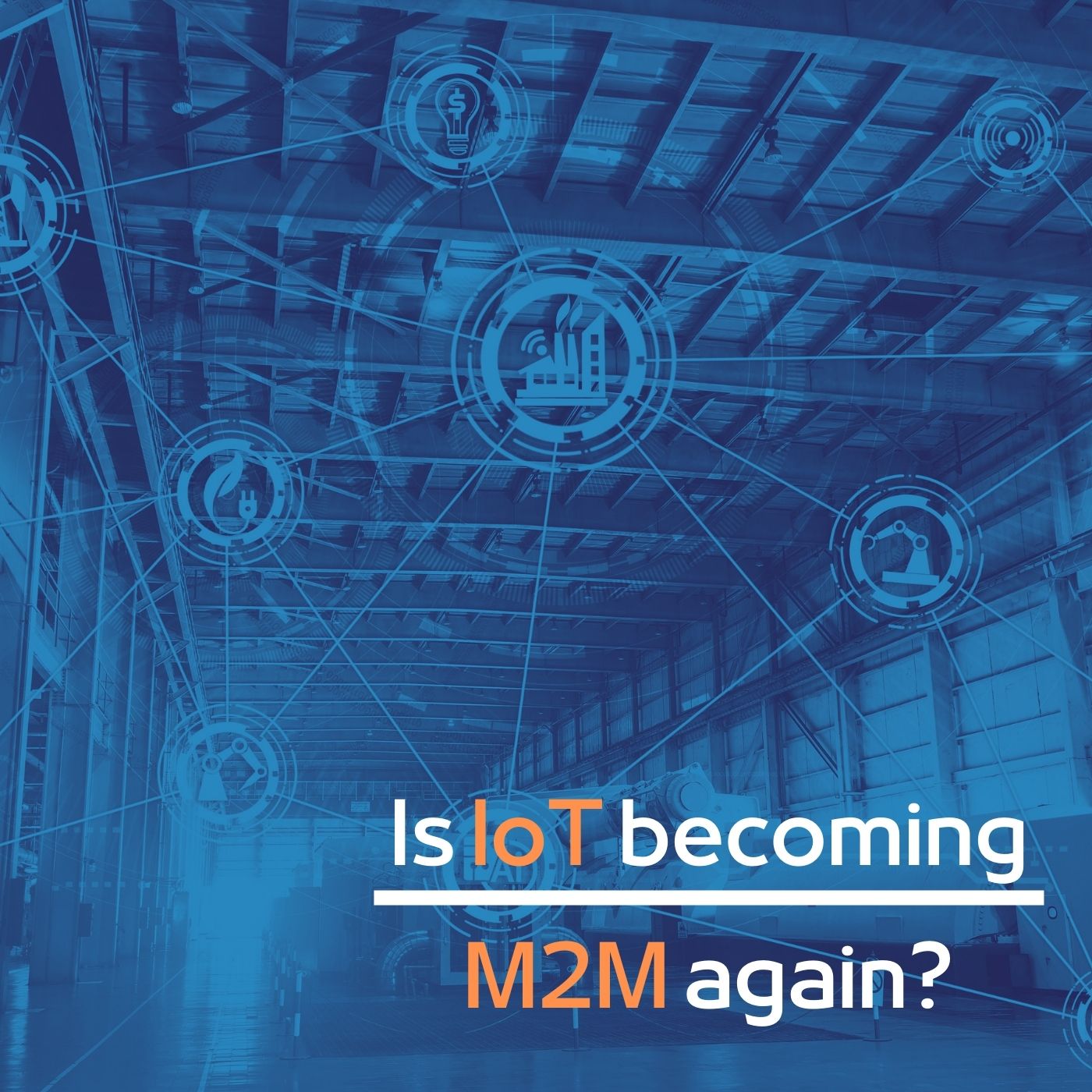Do you remember M2M, the predecessor to IoT? You may think they mean the same, but they have significant differences.
M2M vs. IoT: Understanding the Differences
M2M is a traditional system setup used to manage a specific process’s monitoring, control, or optimization. M2M involves connecting particular parts of a process to exchange information. For instance, it is explicitly defined that machine one will send operational data to the control room’s control system A. When the same factory allows an external company to handle maintenance, they typically do not integrate it into the existing system. Instead, a second M2M system is created, with clear definitions of both endpoints. In this case, the machine’s sensors will send operational data to the maintenance company, and a new infrastructure is built to solve the task.
M2M: Connecting Machines, but Not Processes
Although M2M is excellent at connecting machine to machine, it is challenging, and often impossible, to share data between two different processes. In cases where this is possible, unique solutions are required. An M2M architecture means an industrial building can have separate systems with varying communication structures for ventilation, security, and fire protection. Therefore, there are often parallel systems where each system has its sensors connected to a proprietary hardware solution with an operator panel for each system. Each system communicates internally with its protocols and standards. M2M is silos of information that do not share data with other silos.
IoT: Sharing Data to Optimize the Ecosystem
IoT, on the other hand, involves systems publishing their information without the systems needing to know which programs, processes, or users will use it. Thus, data is available to multiple systems in a way that can be expanded and revised if new needs arise. Even with IoT, we connect a machine, but this time, the information ends up in a database where multiple processes can retrieve it. Control Room A can subscribe to data to display on the operator panel, but the maintenance company can also subscribe to the same operational data.
In both cases, one end of the chain is a machine. In the case of M2M, the other end is another machine, while in IoT, it is a database. Therefore, IoT systems can scale up and down without changing the infrastructure. However, with M2M, infrastructure or networks must change for almost every change.
IoT optimizes not only a single process but the entire ecosystem. Data can be reused and combined freely without defining everything one wants to do on the first day of the project. The initially intended use case may justify the investment in the system, but one can learn how to expand the system in the future. Unlike traditional M2M systems, IoT architectures provide flexibility.
In conclusion, IoT and M2M are not the same, and they have significant differences. IoT is like a news agency’s newsfeed but for machines, as it publishes data without considering its use. IoT systems offer greater flexibility than traditional M2M systems, making it easier to optimize the entire ecosystem.
IoT’s Open Structure: Security and Privacy Concerns
Some things happening in the IoT world are against the idea of an open structure.
Firstly, there’s the issue of security. When you put your data in a cloud service, you give up control of it. This is a popular argument, and there are calls for laws to regulate this.
Secondly, some people think that data is like gold, and sharing it for free is like giving it away. However, sharing data can help make progress in critical areas like the environment and healthcare.
Lastly, you must be careful whom you share your data with. Some providers might share your data without permission, so choosing a trustworthy one is essential. This is another reason why we need laws to regulate the market.
The Value of Data Sharing: Progress!
Let’s protect essential data and information, but remember that sharing data can have a meaning and that M2M is a dated term we do not need to revive.

